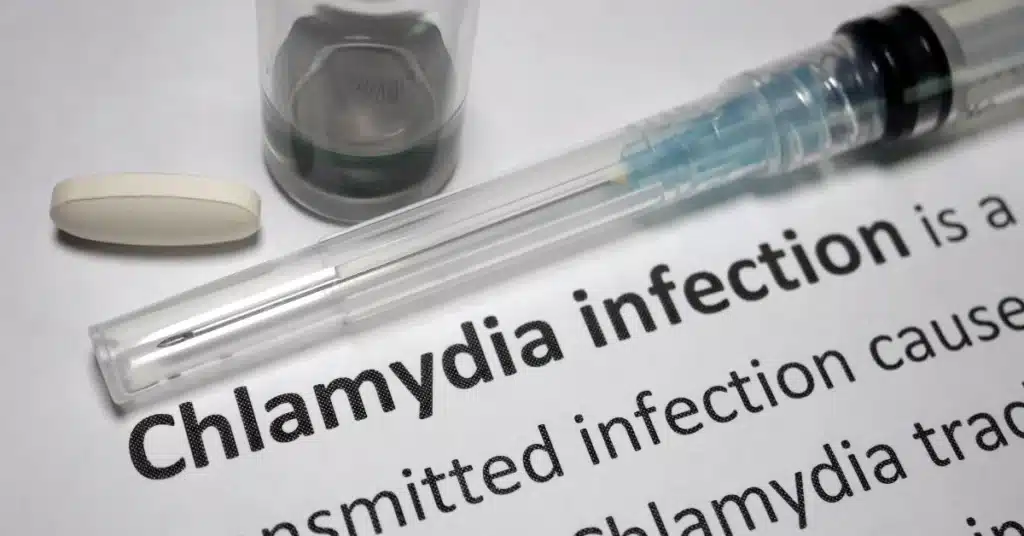Pelvic Inflammatory Disease (PID) is a prevalent reproductive disorder among sexually active women.
This disease results in severe damage to the uterus and the fallopian tubes, leading to infertility in many cases.
But what causes Pelvic Inflammatory Disease?
It is common knowledge that having unprotected sex is the main factor behind PID.
However, gaining a deeper understanding of the potential PID causes is important to prevent this disease effectively.
This article aims to inform you about the conditions and risk factors that may lead to PID.
PID Causes: What Causes Pelvic Inflammatory Disease
Sexually Transmitted Infections (STIs) are the primary cause of Pelvic Inflammatory Diseases (PID).
These infections spread through sexual contact and mainly impact the cervix. Fortunately, they can be effectively treated with medications.
However, if left untreated, the infection may spread to the upper reproductive organs, such as the uterus and ovaries.
At this stage, the individual is diagnosed with PID.
The two major causes of Pelvic Inflammatory Disease are Chlamydia and Gonorrhea.
Besides these conditions, various other bacteria may also lead to PID.
Let us learn about these possible causes of PID in detail below.
Save up to 90% on your medicine bills

Augmentin 500/125 Mg

Azax 500 Mg

Cephadex 500 Mg

Norflox 200 Mg
Chlamydia

Chlamydia is a prevalent STI among both men and women, which is generally asymptomatic.
Research has established that women who test positive for Chlamydia have a higher risk of developing PID compared to those who test negative.
Another research found that about 10% of women infected with Chlamydia are estimated to develop Pelvic Inflammatory Disease.
However, this intricate relationship between Chlamydia and PID is still under research.
Gonorrhea
Gonorrhea is an STI caused by the Neisseria Gonorrhoeae bacterium.
Researchers believe that Gonorrhea infection presents a significantly higher risk than Chlamydia for hospitalization due to PID.
Hence, taking preventive measures against Gonorrhea infection significantly lowers the risk of PID in women.
Other Bacteria
Certain bacteria can sometimes enter your reproductive tract if the protective barrier around the cervix is disrupted.
This may occur due to processes such as:
- Menstruation
- Childbirth
- Miscarriage
- Abortion
- Insertion of an Intrauterine Device (IUD)
Hence, it is important to exercise caution and consult with your doctor to minimize the risk of PID during these activities.
Risk Factors for Pelvic Inflammatory Disease
 Source: Kanchanachit_Khamma
Source: Kanchanachit_KhammaThere are certain risk factors that may make you more prone to developing Pelvic Inflammatory Disease.
These factors include:
- Being sexually active and under 25 years old
- Having multiple sexual partners
- Engaging sexually with someone who has multiple partners
- Unprotected sex
- Previous history of PID or sexually transmitted infections
How to Treat Pelvic Inflammatory Disease
As bacteria are the primary cause of PID, antibiotics are typically the first choice for its treatment.
Some common antibiotics used for PID include Doxycycline and Azithromycin.
If your symptoms do not resolve or the antibiotic therapy is ineffective, you may need to undergo surgery.
Additionally, certain natural remedies for PID may also prove beneficial for some individuals.
It is important to note that while medications can treat the bacteria behind PID, curing PID completely might not be possible for every individual.
Some long-term effects of the disease, such as infertility or internal damage, may not go away completely.
If you wish to dive deeper into this complex subject, Read Finding Out: Can PID Be Cured?
Conclusion
Pelvic Inflammatory Disease (PID) is a serious female reproductive tract infection.
It is primarily caused by Sexually Transmitted Infections (STIs) such as Chlamydia and Gonorrhea.
Other potential PID causes include bacterial infections during Menstruation, childbirth, or miscarriage.
Furthermore, certain conditions may increase the risk of developing PID.
These include being sexually active and under 25, having multiple sexual partners, or having a history of PID.
Antibiotics are the most popular choice for treating this infection.
Hence, it is best to consult a doctor promptly for accurate diagnosis and management of PID.

Frequently Asked Questions
How can I prevent PID?
Preventing PID involves practicing safe and protected sex, limiting sexual partners, and getting tested regularly for Sexually Transmitted Infections.
Seeking prompt treatment for any symptoms or infections is also crucial.
Can PID be caused without an STD?
Yes, PID can be caused by non-sexually transmitted infections, such as Bacterial Vaginosis or normal vaginal bacteria entering the reproductive organs.
However, sexually transmitted infections are the most common cause of PID.
What are the causes of PID in virgins?
In virgins, PID can still occur due to non-sexual factors such as Bacterial Vaginosis, insertion of tampons, or other medical procedures that introduce bacteria into the reproductive tract.
How long before Chlamydia causes PID?
Chlamydia can lead to PID within a few weeks to months if left untreated.
However, PID may develop sooner in some cases, depending on individual factors such as immune response and the severity of the infection.
Can I get a PID from my wife?
No, you cannot get PID from your wife, as PID in men does not exist.
However, you may develop other STIs, such as Chlamydia or Gonorrhea, if your partner is infected by PID.
Cheap Medicine Shop only refers to credible, authoritative sources for our content. If you’re curious about how we ensure the integrity of our content, we encourage you to read our Content Information Policy.











